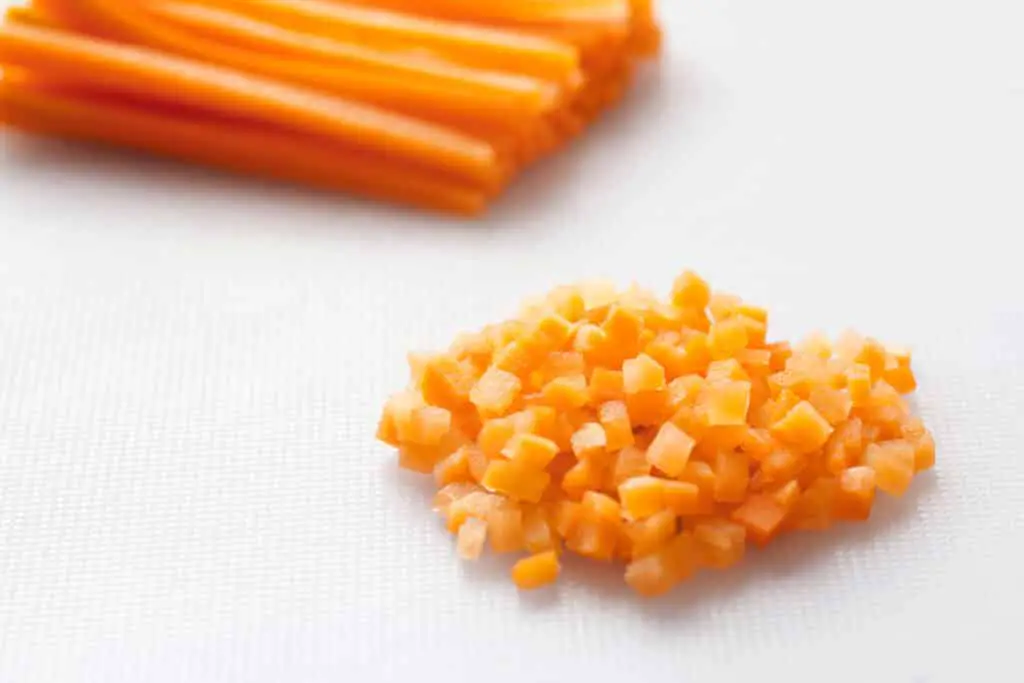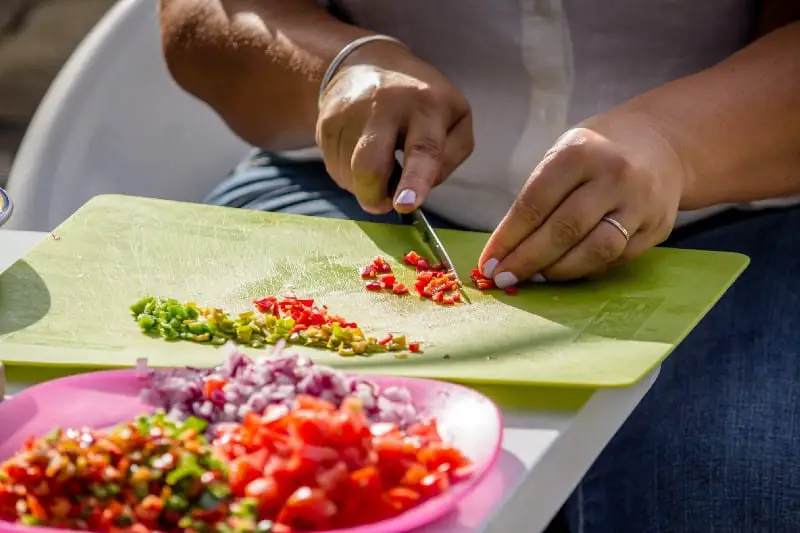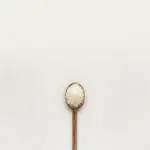Table of Contents
Not quite a dice, not quite a mince. What is it?
For many of us, the way we cut our vegetables doesn’t change much – a rough chop or a quick dice is usually enough to throw into our tomato sauce or empanada filling, but sometimes this isn’t enough. How many times have you wished that your tomato soup base had a little more flavour, or that you wished you couldn’t feel the pieces of onion inside your sauces. Why not try a brunoise cut?
This is where expanding your arsenal of cutting techniques can have enormous effects on your cooking and your final plates. The way we take care of our ingredients can often have such a noticeable effect that you would think it was a different vegetable entirely, so isn’t it about time you gave it a try?
Overview of the Brunoise Cut
A brunoise cut, or a fine brunoise cut, is a traditional french vegetable cut that produces small, regular cubes of produce (1/8th inch and 1/16 inch respectively). Typically reserved for special use cases and as an aromatic garnish, this type of cut creates exceptionally uniform pieces and provides an excellent boost to a plate’s presentation.

Using this in general cooking applications is not advised as the pieces have a tendency to disappear into nothing with the slightest bit of overcooking. Instead, reserve the use of this type of cut for specific uses where the unnatural cubic features can stand on their own merits as impressive pieces of geometrical flair.
Brunoise Method
- Peel the vegetable (if applicable)
- Thin and Square off the vegetable producing a regular shape and size
- Begin slicing off regularly sized slabs along the length of the vegetable
- Once finished, stack the cut slabs taking care to align the edges
- Make clean, parallel cuts of the same thickness to produce a julienne cut
- Line up the julienne cuts so the ends meet and begin chopping into uniform cubes of desired thickness
Brunoise Applications
There is a multitude of ways that you can utilise a brunoise cut, as it is a general-purpose cut, however, there are a few ways in which they have traditionally been used to great effect.
Soups and Stocks
Both of these applications have long since suffered from the complaint that it is very difficult to impart a large amount of flavour from ingredients without compromising texture and mouth-feel; however, the small cubes produced by a brunoise cut allow for the flavour and aroma to more easily transfer to the cooking liquid by means of increased surface area. In addition, the small/tiny size of the ingredients ensures that the texture is minimally affected, with some ingredients effectively disappearing into the sauce.
Texture and Garnish

One of the primary uses of a brunoise style cut is to add colour and texture to a dish; due to the small sizes of the produced vegetables, using this method of cutting in general cooking is inadvisable as the time it takes to cook such small pieces of food can lead to mixed levels of cooking within a dish. However, when used to garnish it is often either par-boiled or steamed to minimise the raw taste whilst retaining as much of the crunch as possible.
Knife Recommendations for Brunoise Cuts
Due to the overwhelming majority of vegetable preparation in brunoise cuts, a vegetable knife is essential to producing uniform cubes with ease.
Santoku
Named after its three uses, slicing, dicing and mincing – the Santoku knife is an excellent knife for achieving an excellent brunoise cut, the steep bevel on either side of the blade ensure that you get the clean and crisps cuts that are essential to uniform cubic sides.
Nakiri
A Nakiri knife, otherwise known as a vegetable knife, has a very rectangular blade best suited for push chopping or vertical chopping. This knife is almost exclusively used for vegetable preparation and therefore is an excellent all-around choice for not only brunoise style cuts but also Paysanne and Rondelle.
Chef’s Knife
The workhorse of the home cooks kitchen, a good chefs knife will make short work of any vegetable it comes across – assuming it is sharp and well maintained. The ability to rock your knife blade on your chopping board can help you to more accurately line up your sensitive cuts.
I get commissions for purchases made through links in this post.













